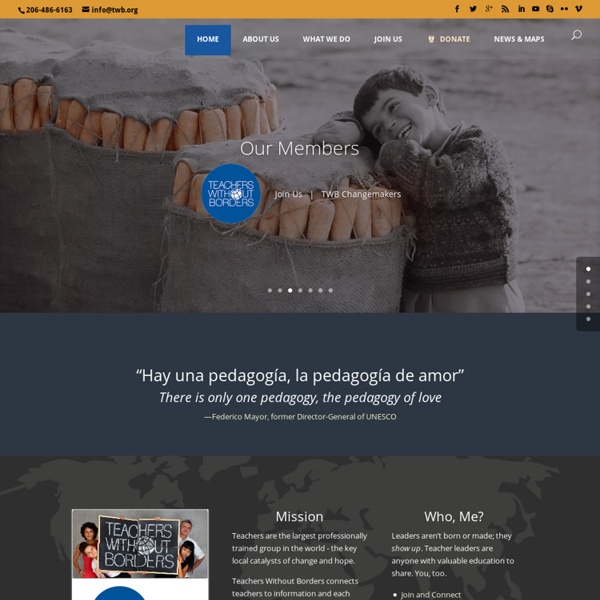



The Cape Town Open Education Declaration WHAT’S IN MY BAG? — Uprooted IRC This year, nearly 100,000 men, women and children from war-torn countries in the Middle East, North Africa and South Asia have fled their homes and traveled by rubber dinghies across the Aegean Sea to Lesbos, Greece. Refugees travel light, for their trek is as dangerous as it is arduous. They are detained, shot at, hungry. Smugglers routinely exploit them, promising safety for a price, only to squeeze them like sardines into tiny boats. Most have no option but to shed whatever meager belongings they may have salvaged from their journeys. Those allowed to bring extra baggage aboard often toss it overboard, frantically dumping extra weight as the leaky boats take on water. Few arrive at their destinations with anything but the necessities of life. “You will feel that you are a human.
BBC Learning - Open Lab Connexions - Sharing Knowledge and Building Communities Main Page The Women of Zaatari Refugee Camp The older, more established parts of the camp are generally safer because they have electricity. People know or are related to one another, unlike in the newer areas, where neighbors are strangers. Those outlying areas are much less crowded, trailers and tents are more widely spaced, and there are no streetlights, making a nighttime visit to the communal toilets, for example, a terrifying dash. There is talk of rapes and prostitution, but few cases of sexual assault are reported because most victims refuse to speak out because of the social stigma attached to sexual violence. Zaatari is just one consequence of a hemorrhaging Syrian conflict that began in March 2011 with peaceful protests against President Bashar al-Assad and morphed into a grinding civil war that has claimed more than 120,000 lives. Rena Effendi Rana Mokdad, 24, works as an assistant in a beauty salon run by a fellow refugee. More than 90 percent of Zaatari's residents are from Daraa. She had her own salon in Damascus.
Peer 2 Peer University Podporujeme lidi z neziskového sektoru | Radost30 Wikiversity Syria's refugees: Girls use photography to document life in the Zaatari camp For three months, a group of Syrian girls aged 14 to 18-years-old from Za'atari Camp - the biggest refugee camp for Syrians, which can now be counted the fourth biggest city in Jordan - participated in a media workshop to gain artistic and technical training in photography and video, with encouragement to reflect on and voice their own stories and those of their surrounding community. With cameras, microphones and pens in hand, the girls set out to document their everyday lives – how it looks, feels and sounds from the ground, at the heart of their world. One of the young artists, who has just started learning to read and write, named the body of work 'Waves of Childhood.' All photographs and writing in the following slides were produced by the girls. Picture: womenone.org
DUMAS (Dépôt Universitaire de Mémoires Après Soute BeInternational